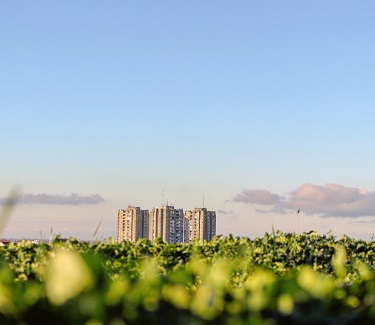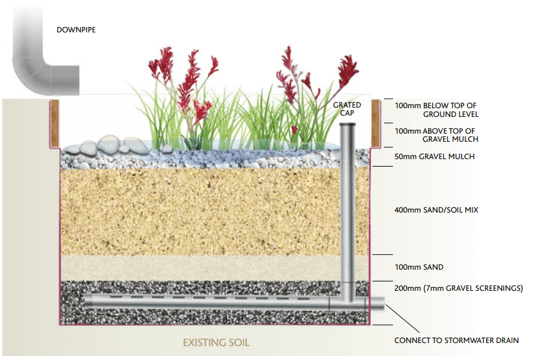ESD Report
ESD report is proof that your building design complies with Ecologically Sustainable Development principles. You will need ESD report when you are applying for a building permit.
First, the ESD report looks into how you preserve energy, water, groundwater, site ecology, etc.
Second, the ESD report looks into how you maintain the comfort and well-being of occupants.
Last, it looks into the potential and possibility of innovation to improve building performance.
See Frequently Asked Questions (FAQ) about ESD and learn more!


ESD Report
ESD report is proof that your building design complies with Ecologically Sustainable Development principles. You will need ESD report when you are applying for a building permit.
First, the ESD report looks into if you are using environmental-friendly building materials for construction.
Second, the ESD report looks into how you preserve energy, water, groundwater, site ecology, etc.
Third, the ESD report looks into how you maintain the comfort and well-being of occupants.
Last, it looks into the potential and possibility of innovation to improve building performance.
At Energy Compliance, we offer all avenues to demonstrate your building compliance under any conditions.
At Energy Compliance, we offer all avenues to demonstrate your building compliance under any conditions.

Quality
We perform more iterations to reduce your construction costs.
We utilize our expertise, our past experience and client preferences to conduct the best solution possible.

Quality
We perform more iterations to reduce your construction costs.
We utilize our expertise, our past experience and client preferences to conduct the best solution possible.
Service Guarantee
If we can’t reduce your construction cost by more than our fee, we’ll only charge our 40% deposit. This is the best proof of how cost-efficient our performance-based solutions are. You won’t get this anywhere else!


Service Guarantee
If we can’t reduce your construction cost by more than our fee, we’ll only charge our 40% deposit. This is the best proof of how cost-efficient our performance-based solutions are. You won’t get this anywhere else!

Quick Turnaround
Quotations: Same business day of inquiry.
ESD reports: 7-14 business days (depends on the complexity and the initial degree of compliance).

Quick Turnaround
Quotations: Same business day of inquiry.
ESD reports: 7-14 business days (depends on the complexity and the initial degree of compliance).
Do I need an ESD report?
Residential buildings
With residential buildings, you don’t need ESD report if you are building a single dwelling.
You need an ESD report if you are building 2 to 9 dwellings. This ESD report is called SDA (Sustainable Design Assessment).
You need an ESD report if are developing 10 or more dwellings. This ESD report is called SMP (Sustainable Management Plan).
Commercial buildings
You don’t need ESD report if your commercial (Non-residential) buildings, building has a gross floor area of less than 100m2.
You need an ESD report If you are developing a building with a gross floor area of less than 1000m2. This ESD report is called SDA (Sustainable Design Assessment).
You also need ESD report if you are developing a building with a gross floor area of more than 1000m2. This ESD report is called SMP (Sustainable Management Plan).
Note that each council has its requirements for environmental sustainability and the above are commonly applied by most councils.
What are the key sustainable building parameters for an ESD report?
ESD report consists of several aspects that can assist in sustainable construction. Although the guidelines of different councils may vary, the core parameters in sustainable development stay the same. We can categorise these key parameters as below:
Indoor Environment Quality

Objectives:
- To minimize the use of mechanical heating, cooling and ventilation systems.
- To achieve high levels of daylight.
- To achieve a healthy indoor environment and the wellbeing of occupants.
- To reduce indoor air pollutants and noise levels.
- To reduce reliance on artificial lighting.
Typical responses:
- Increase the access to daylight by altering the position and the size of glazing and shading.
- Daylight modelling to assure all spaces are adequately daylit.
- Use of external adjustable shading devices.
- Set window SHGC with respect to its orientation and minimize mechanical heating and cooling.
- Enable access to natural ventilation to offset mechanical cooling demand.
Indoor Environment Quality

Objectives:
- To minimize the use of mechanical heating, cooling and ventilation systems.
- To achieve a healthy indoor environment and the wellbeing of occupants.
- To reduce indoor air pollutants and noise levels.
- To reduce reliance on artificial lighting.
Typical responses:
- Increase the access to daylight by altering the position and the size of glazing and shading.
- Use of external adjustable shading devices.
- Set window SHGC with respect to its orientation and minimize mechanical heating and cooling.
- Enable access to natural ventilation to offset mechanical cooling demand.
Energy Efficiency

Objectives:
- To reduce building overall energy consumption.
- To recognise the building’s passive potentials to sustain energy.
- To reduce the building’s total greenhouse gas emissions.
- To reduce building peak energy demand through passive measures.
Typical responses:
- Building to achieve a better thermal performance than DTS provisions (i.e. through JV3 modelling or other means)
- Use of external shading devices to restrict solar radiation in summer and to allow it in winter.
- Lesser artificial lighting power density than the maximum allowed by NCC.
- Use of appliances with good ratings.
Energy Efficiency

Objectives:
- To reduce building overall energy consumption.
- To recognise the building’s passive potentials to sustain energy.
- To reduce the building’s total greenhouse gas emissions.
- To reduce building peak energy demand through passive measures.
Typical responses:
- Building to achieve a better thermal performance than NCC provisions (i.e. through Performance solutions)
- Use of external shading devices to restrict solar radiation in summer and to allow it in winter.
- Lesser artificial lighting power density than the maximum allowed by NCC.
- Use of appliances with good ratings.
Water Efficiency

Objectives:
- To reduce overall water consumption.
- Use of water-efficient fixtures.
- Recycle rainwater and run-off water for building use.
- More water-efficient landscaping.
Typical responses:
- Installation of water fixtures with high star WELS rating.
- Use of rainwater tanks for sanitary flushing and irrigation.
- Treatment of grey water by various approved means.
Water Efficiency

Objectives:
- To reduce overall water consumption.
- Use of water-efficient fixtures.
- Recycle rainwater and run-off water for building use.
- More water-efficient landscaping.
Typical responses:
- Installation of water fixtures with high star WELS rating.
- Use of rainwater tanks for sanitary flushing and irrigation.
- Treatment of grey water by various approved means.
Stormwater Management

Objectives:
- To reduce the impact of stormwater run-offs.
- To improve the quality of run-offs into groundwater and rivers.
- To reuse stormwater and reduce overall domestic water consumption.
Typical responses:
- Use of rainwater tanks for sanitary flushing and irrigation (find out more).
- Use of permeable materials.
- Installation of rain gardens, ponds and wetlands.
Stormwater Management

Objectives:
- To reduce the impact of stormwater run-offs.
- To improve the quality of run-offs into groundwater and rivers.
- To reuse stormwater and reduce overall domestic water consumption.
Typical responses:
- Use of rainwater tanks for sanitary flushing and irrigation.
- Use of permeable materials.
- Installation of rain gardens, ponds and wetlands.
Building Materials

Objectives:
- Selection of low impact materials for construction.
- To reduce the CO2 impact or embodied energy of building materials.
- To maximise the responsible sourcing materials.
- To encourage the use of recycled or reused materials.
Typical responses:
- Restrict the use of PVC in piping or other building elements.
- Use of sustainable certified materials.
- Reuse of Materials and other Recycled Materials.
- Use of FSC certified timber or recycled timber.
- To reduce the use of material that contains high levels of VOC (or other toxic elements)
Building Materials

Objectives:
- Selection of low impact materials for construction.
- To reduce the CO2 impact or embodied energy of building materials.
- To maximise the responsible sourcing materials.
- To encourage the use of recycled or reused materials.
Typical responses:
- Restrict the use of PVC in piping or other building elements.
- Use of sustainable certified materials.
- Reuse of Materials and other Recycled Materials.
- Use of FSC certified timber or recycled timber.
- To reduce the use of material that contains high levels of VOC (or other toxic elements)
Transport

Objectives:
- To encourage the use of walking, cycling and public transport.
- To minimize personal car dependency.
- To promote the use of low-emission vehicle technologies and supporting infrastructure.
Typical responses:
- Provide convenient and secure bike storage facilities.
- Provide end of trip change facilities for bike users.
- Provide infrastructure for electric vehicle charging.
- Describe the site’s proximity and access to public transportation.
- Reduction in the extent of onsite car parking.
Transport

Objectives:
- To encourage the use of walking, cycling and public transport.
- To minimize personal car dependency.
- To promote the use of low-emission vehicle technologies and supporting infrastructure.
Typical responses:
- Provide convenient and secure bike storage facilities.
- Provide end of trip change facilities for bike users.
- Provide infrastructure for electric vehicle charging.
- Describe the site’s proximity and access to public transportation.
- Reduction in the extent of onsite car parking.
Waste Management

Objectives:
- To avoid, recycle or reuse waste during design, construction and operation stages.
- To ensure reusability and durability of building materials.
- To ensure we allocate sufficient space for future change in waste management needs.
Typical responses:
- Provide allocated space(s) for general waste, recycling and green waste.
- Operation Waste Management Plan
- Construction Waste Management Plan
Waste Management

Objectives:
- To avoid, recycle or reuse waste during design, construction and operation stages.
- To ensure reusability and durability of building materials.
- To ensure we allocate sufficient space for future change in waste management needs.
Typical responses:
- Provide allocated space(s) for general waste, recycling and green waste.
- Operation Waste Management Plan
- Construction Waste Management Plan
Urban Ecology

Objectives:
- To protect and enhance biodiversity.
- To provide environmentally sustainable landscapes and natural habitats.
- To encourage the retention of trees.
- To encourage the planting of indigenous vegetation.
- To encourage the provision of space for productive gardens
Typical responses:
- Allow vegetated areas on site
- Allow a tab connected to the rainwater tank for irrigation
- Installation of efficient irrigation systems like drip irrigation.
- Use vegetation to control solar heat gains, glare or ventilation.
Urban Ecology

Objectives:
- To protect and enhance biodiversity.
- To provide environmentally sustainable landscapes and natural habitats.
- To encourage the retention of trees.
- To encourage the planting of indigenous vegetation.
- To encourage the provision of space for productive gardens
Typical responses:
- Allow vegetated areas on site
- Allow a tab connected to the rainwater tank for irrigation
- Installation of efficient irrigation systems like drip irrigation.
- Use vegetation to control solar heat gains, glare or ventilation.
Innovation

Objectives:
- Implementation of innovative practices to promote sustainability.
- To encourage innovative technology, design and processes in all development.
Typical responses:
- Describe how building design exceeds best practice in one or more of the above 9 categories.
- Design buildings capable of passively maximizing natural ventilation, lighting and energy efficiency.
- Design buildings responsive to local climate condition that enhances ESD outcomes.
- Use of CFD modelling to back up the claims of energy reduction due to the innovations.
Innovation

Objectives:
- Implementation of innovative practices to promote sustainability.
- To encourage innovative technology, design and processes in all development.
Typical responses:
- Describe how building design exceeds best practice in one or more of the above 9 categories.
- Design buildings capable of passively maximizing natural ventilation, lighting and energy efficiency.
- Design buildings responsive to local climate condition that enhances ESD outcomes.
Building Management

Objectives:
- To encourage practices that enable and support best practice sustainability outcomes throughout the different phases of project design.
- To encourage sustainability advice from professionals.
- Accumulation of management experience together with the use of modern tools of building modelling.
Typical responses:
- Engaging ESD professionals to provide sustainability advice.
- Preliminary building thermal modelling.
- Creating building user guides to help occupants learn how to preserve energy and such using the features of the building.
Building Management

Objectives:
- To encourage practices that enable and support best practice sustainability outcomes throughout the different phases of project design.
- To encourage sustainability advice from professionals.
- Accumulation of management experience together with the use of modern tools of building modelling.
Typical responses:
- Engaging ESD professionals to provide sustainability advice.
- Preliminary building thermal modelling.
- Creating building user guides to help occupants learn how to preserve energy and such using the features of the building.
Tools we use for developing an ESD report?
If you are required to have an ESD report, there are tools to measure how ecologically sustainable your design is. As we implement SDAPP framework in the design stage, several tools demonstrate ‘best practice’ recommended by the councils. These tools are:
- Built Environment Sustainability Scorecard (BESS)
- Green Star
- Nationwide House Energy Rating Scheme (NatHERS)
- National Australian Built Environment Rating System (NABERS)
- Stormwater Treatment Objective Relative Measure (STORM)
- Model for Urban Stormwater Improvement Conceptualisation (MUSIC)
Implementation of the above tools is mainly based on building classification and the sustainability category. For more information on building classes, click here
Note that VURB method cannot be used for developments that require an ESD report. This is due to the fact that ESD reports are not generally required for detached residential dwellings (Class 1 buildings).

MUSIC
If you are required to have an ESD report, there are tools to measure how ecologically sustainable your design is. As we implement SDAPP framework in the design stage, several tools demonstrate ‘best practice’ recommended by the councils. These tools are:
- Built Environment Sustainability Scorecard (BESS)
- Green Star
- Nationwide House Energy Rating Scheme (NatHERS)
- National Australian Built Environment Rating System (NABERS)
- Stormwater Treatment Objective Relative Measure (STORM)
- Model for Urban Stormwater Improvement Conceptualisation (MUSIC)
Implementation of the above tools is mainly based on building classification and the sustainability category. For more information on building classes, click here

Green Star

NABERS

MUSIC
What is SDAPP?
SDAPP is an abbreviation for Sustainable Design Assessment in the Planning Process. SDAPP refers to including key environmental performance consideration in the planning permit approvals process. In simple words, SDAPP is a practical approach to assess sustainable development matters during the planning permit application process (or rather the inclusion of environmental performance standards into the planning permit approval process).
What is WSUD or STORM report in SDA, SMP and ESD reports?
WSUD or STORM report provides treatments for handling Stormwater from the site that are proposed for commercial or residential development. Any development add impervious surface to the lot and create excess Stormwater that didn’t exist prior to the development.
In a greenfield land, Stormwater mostly infiltrates the green field land.
WSUD is a design process that consider handling the extra stormwater generated from land compared to its original condition. Through WSUD, the storm waterSDAPP is an abbreviation for Sustainable Design Assessment in the Planning Process. SDAPP refers to including key environmental performance consideration in the planning permit approvals process. In simple words, SDAPP is a practical approach to assess sustainable development matters during the planning permit application process (or rather the inclusion of environmental performance standards into the planning permit approval process).
More facts about ESD:
- The internationally recognized and long-standing concept of Ecologically Sustainable Development (ESD) rose in Australia more than 30 years ago.
- According to Australian National Strategy for Ecologically Sustainable Development (1992), ESD is defined as: “using, conserving and enhancing the community’s resources so that ecological processes, on which life depends, are maintained, and the total quality of life, now and in the future, can be increased”.
- The ESD strategies imposed by the government is deemed to let Australia grow on a more sustainable footing; ranging from a single dwelling to a non-residential or a mixed-use facility.
Inground rain garden
A rain garden is a specially prepared garden designed to receive and filter rain run-off from roofs or hard surfaces such as driveways or paving. Raingardens, also known as biofiltration or bioretention beds, are garden beds that use plants and soils to capture, filter, and clean stormwater.
A typical rain garden consists of layers of soil for filtration, gravel for drainage, and plants that can tolerate periods without rain, a rain garden helps to protect streams and rivers from stormwater pollutants. With a slotted pipe beneath the soil to take away the filtered rainwater and an overflow pipe on the surface to prevent flooding, rain gardens are designed to collect water from a disconnected downpipe, rainwater tank overflow, or pavement runoff. The following pictures summarize the overall installation method.




The STORM calculation is to evaluate the minimum surface area or volume of treatment options. It will responsibility of the project civil engineer to do a detailed design and provide construction drawings. As a rule of thumb, raingarden should not be installed under the canopy of trees where the tree root is expected to interfere with the slotted pipe inside the rain garden. The excavation for raingarden also needs to be a minimum 300mm away from the building foundation. If the building foundation is shallow (150mm in depth), the minimum distance should be extended to 800mm from the footing.

Typical construction details of the rain garden are shown in the Figure below:
Click here for the complete instruction sheet from Melbourne water.
Infiltration raingarden/Sand/Sandy loam
An infiltration rain garden for a STORM assessment is a gravel-filled trench designed to act like an underground reservoir to buy time to allow rain water to infiltrate to the existing soil. Infiltration raingarden has layers of soil for filtration, gravel for drainage, and plants that can tolerate both extreme wet and dry conditions.


An infiltration rain garden can be any shape, and it is most effective in areas with sandy soils. Infiltration sand should be positioned at least 5m away from any permanent structure (i.e. house, garage or shed). if it is within 5m from a building, a PVC liner is recommended to be installed on the vertical sides of the trench close to the structure.
Note that the soil needs to be permeable (such as sand with 100mm/hr permeation) for infiltration sand treatment option to be effective. If the soil is medium clay (with 3.6mm/hr permeation) the rain garden surface area should be increased by approximated 25% to allow enough time for water to stay in the trench and infiltrate the existing soil (Table 2, Reference). Note that the STORM calculation is to evaluate the minimum surface area for infiltration sand and It will responsibility of the project civil engineer to do a detailed design and provide construction drawings for the infiltration sand as a stormwater treatment option.
Links to detailed description of different storm water treatments options from Melbourne Water is provided below:
Green roof raingarden instruction sheetPDF|1.99 MB
Infiltration raingarden instruction sheetPDF|661.77 KB
Inground raingarden instruction sheetPDF|741.87 KB
Planter box raingarden instruction sheetPDF|690.9 KB
What plants to use for raingarden that don’t need an irrigation system with potable

Plant List – the best plants for your raingarden
The following plants will grow well in raingardens in and around greater Melbourne.
Botanical name Common name Conditions SIZE (H x W) (cm)
Anigozanthos species Kangaroo Paw Full sun 30-90 x 100-120
Blechnum nudum Fishbone Water-fern Full sun to partial shade 50-100 x 40-80
Calocephalus lacteus Milky Beauty-Heads Full sun to partial shade 15-30 x 10-30
Carex appressa Tall Sedge Full sun to partial shade 80-100 x 120
Carpobrotus modestus Pigface Full sun 20cm high and spreading
Chrysocephalum apiculatum Common Everlasting Full sun 30-90 x 10-30
Derwentia perfoliata Digger’s Speedwell Full sun to partial shade 20-40 x 30-60
Dianella species – Full sun to partial shade 60-120 x 40-150
Ficinia nodosa Knobby Club-Rush Full sun 50-150 x 60-200
Juncas amabilis Hollow Rush Full sun to partial shade 20-120 x 20-50
Juncas flavidus Yellow Rush Full sun to partial shade 40-120 x 20-100
Leucaphyta brownii Cushion Bush Full sun, salt tolerant 100 x 200
Lomandra species – Full sun to partial shade 60-120 x 50-100
Melaleuca ericifolia Swamp Paperback Full sun to partial shade 4m high x 3m wide
Myoporum parvifolium Creeping Boobialla Full sun 20-30 x 300
Patersonia occidentalis Native Iris Sun to partial shade 20-40 x 30-60
Pratia perdunculata Matter Pratia Partial shade 50-150 x 1.8-5
Wahlenbergia communis Tufted Bluebell Full sun 15-50 x 15
FAQ
You need an ESD report for your building if:
- your building is located in one of the 79 Victorian councils (as of now – see here), where ESD requirements apply; and
- you are developing an apartment with more than 2 sole occupancy units or a commercial building with an area of greater than 100m2
Depending on the size of your development, your ESD report will be in the form of ESD report or SMP report.
Delivery time of your completed ESD report depends on the size of your development. At Energy Compliance Consultants, we prepare your ESD report under following timelines:
- Quote: same working day
- Summary report: this report is delivered to the client between 3-7 days (depending on the size of your development) and covers basic requirements, commitments and the assumption we made to prepare the report. Our client gets back to us with comments and clarifications. The most time-consuming process in an ESD job is JV3 or Daylight modelling.
- Final report: final report usually takes between 1-3 days
Benefits of could be summarized as follows:
- Environment: to acknowledge the risks of water shortages and hazards to the biodiversity and ecosystem, Australia has to adopt policies to adopt its developments to make them more environment-friendly in the future.
- Resilience: Australia is one of the most vulnerable countries to the negative impacts of climate change like sea level rise, bushfires and heat waves. Therefore, its essential for the new developments to be more resilience to the climate change in the future.
- Management: a good building management ensures the preservation of ecosystem, recycling, effective waste disposal and water management. Councils have several requirements in these areas.
- Grid independence: with a growing construction industry and ever-growing use of energy, buildings depend more and more on grid network. ESD initiation proposes ways for new development to be more green and grid-independent.
- Energy saving: new developments must be well-insulated, use windows with high performance and efficient services. These measures reduces energy bills for the future occupants.
To understand the ESD initiatives better, you need to read following references:
- Guidelines developed by your governing council.
- National Construction Code, Volume 1
- Bess tool notes
- SDAPP guidelines developed by City of Yarra council.
There are several tools that could be used for conducting an ESD report:
- Energy: NatHERS accredited tools (e.g. FirstRate 5), JV3 modelling using a commercial software (e.g. DesignBuilder)
- Natural light: Green Star hand calculation, Daylight modelling using a commercial software (e.g. DesignBuilder)
- Stormwater: MUSIC, STORM
For other ESD categories, BESS supplies built-in forms and calculators.
A typical ESD report involves the following:
- Basic information: site data, building data, assessor qualification, climate zone, references documents, etc
- Commitments: overall score and achievement under BESS and a summary of commitments regarding a sustainable design
- Assumptions: several items could be missing from the drawings
- Detailed results: detailed description of ESD commitments that is related to each 10 key categories are discussed here.
- Evidence: all external data and documents that are required to make the above claims are shown here
BASIX is the tool used to address ESD for the developments in NSW
BESS is an ESD tool that is exclusive of Victoria. The other well-known tool is STORM that is used for Stormwater management.
Green Star and NABERS could be used to address ESD initiatives across all states in Australia.



